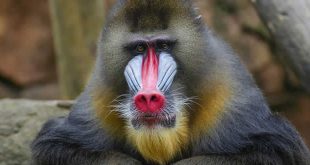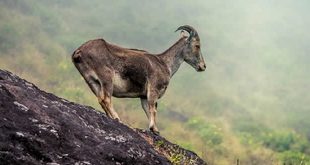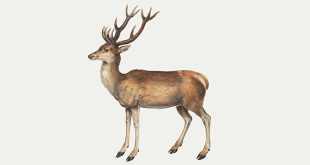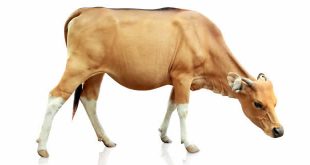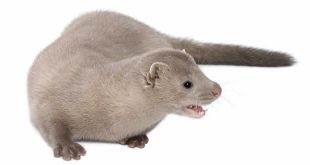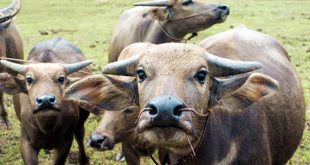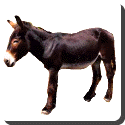 Ass — The donkey or ass, Equus asinus, is a member of the Equidae family, and an odd-toed ungulate. The words refer to the domesticated E. asinus. The animal considered to be its wild ancestor, is called the African Wild Ass, also E. asinus.
Ass — The donkey or ass, Equus asinus, is a member of the Equidae family, and an odd-toed ungulate. The words refer to the domesticated E. asinus. The animal considered to be its wild ancestor, is called the African Wild Ass, also E. asinus.
Colloquially, the term “ass” is usually used today to refer to a larger, horse-sized animal, and “donkey” to a smaller, pony-sized one. In the western United States, a small donkey is sometimes called a burro. A male donkey or ass is called a jack, a female a jenny, and offspring less than one year old, a foal (male: colt, female filly).
While different species of the Equidae family can interbreed, offspring are almost always sterile. Nonetheless, horse/donkey hybrids are popular for their durability and vigor. A mule is the offspring of a jack (male) donkey and a mare (female horse). The mating of a male horse and a female donkey produces a hinny.
Asses were first domesticated around 4000 BCE, approximately the same time as the horse, and have spread around the world. They continue to fill important roles in many places today and domesticated species are increasing in numbers (although the African wild ass and another relative, the Onager are endangered species). As “beasts of burden” and companions, asses and donkeys have worked together with humans for centuries.
Donkeys range considerably in size, depending on breed and management. Most domestic donkeys range from 0.9 to over 1.4 m tall, though the Mammoth Jack breed is taller, and the Andalucian-Cordobesan breed of southern Spain can reach up to 1.6 m high.
Donkeys are adapted to marginal desert lands, and have many traits that are unique to the species as a result. Wild donkeys live separated from each other, unlike tight wild horse and feral horse herds. Donkeys have developed very loud vocalizations, which help keep in contact with other donkeys over the wide spaces of the desert. The best-known call is referred to a “bray,” which can be heard for over three kilometers. Donkeys have larger ears than horses. Their longer ears may pick up more distant sounds, and may help cool the donkey’s blood. Donkeys in the wild can defend themselves with a powerful kick of their hind legs as well as by biting and striking with their front feet.
Donkeys’ tough digestive system is somewhat less prone to colic than that of horses, can break down near-inedible vegetation and extract moisture from food very efficiently. As a rule, donkeys need smaller amounts of feed than horses of comparable height and weight. Because they are easy keepers, if overfed, donkeys are also quite susceptible to developing a condition called laminitis.
 Kids Portal For Parents India Kids Network
Kids Portal For Parents India Kids Network
